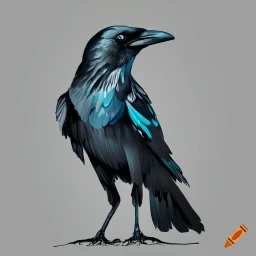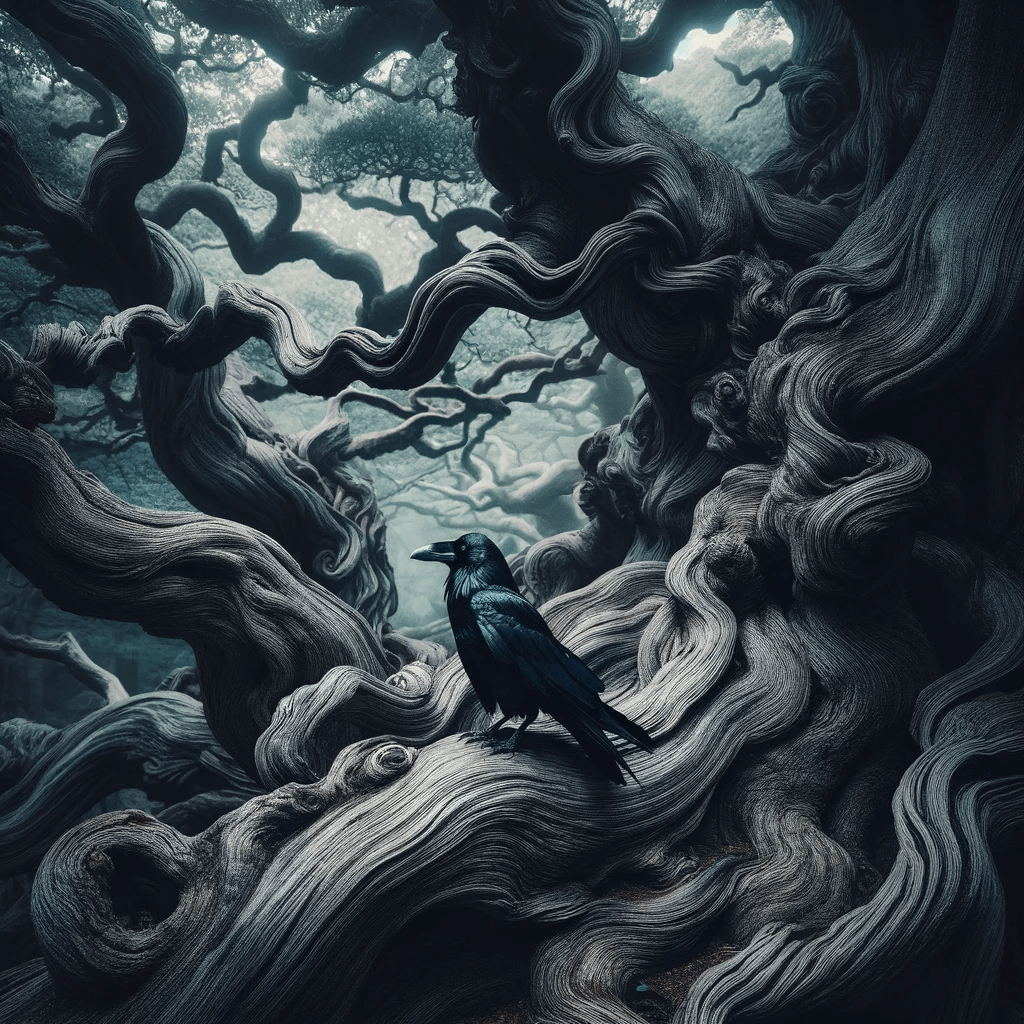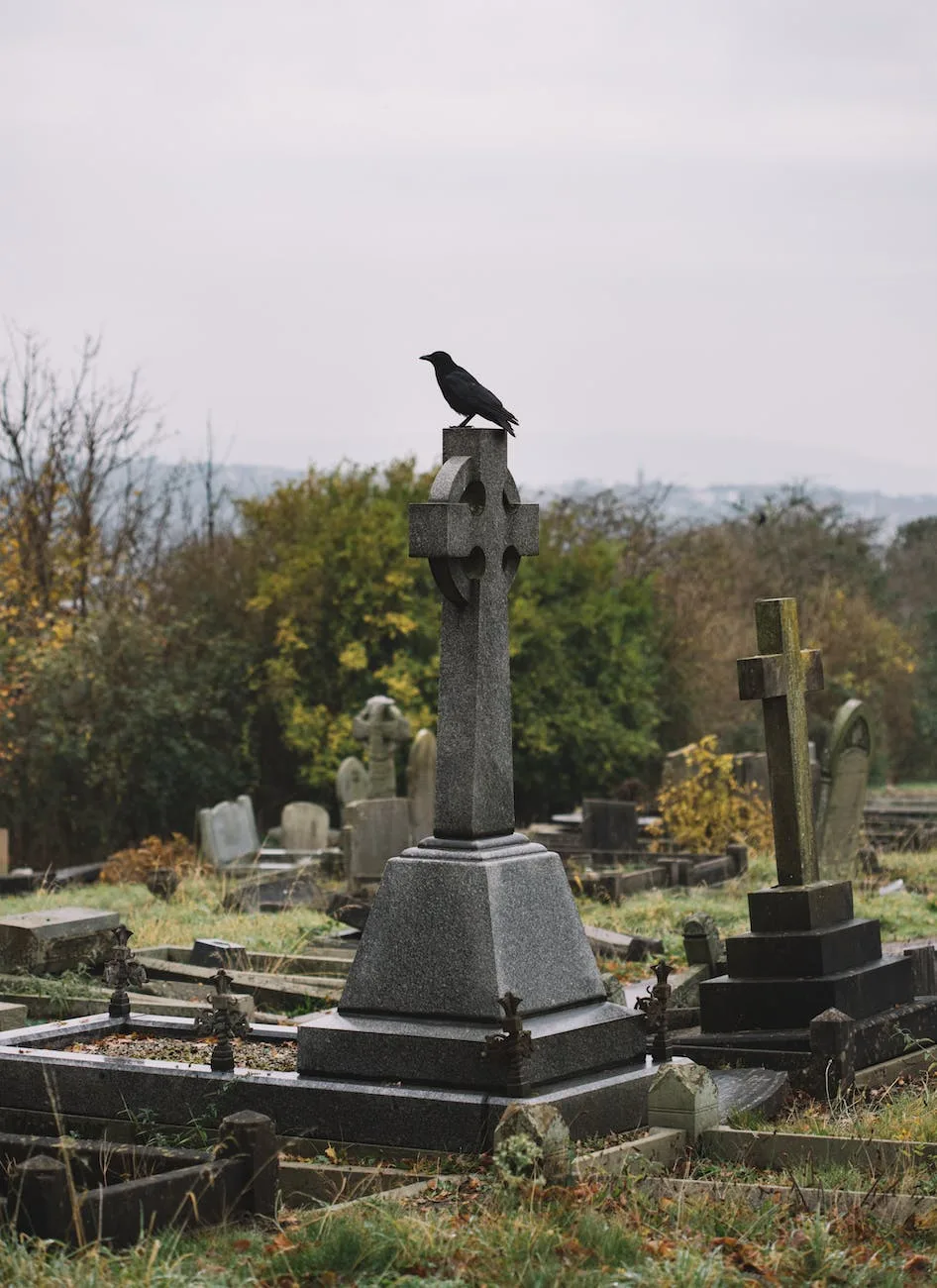The Marvelous Corvus Moneduloides: New Caledonian Crows Story
December 30, 2023 | by BlackCrow.com

Meet the Marvelous Corvus Moneduloides
Introduction to the New Caledonian Crow
The New Caledonian Crow, scientifically known as Corvus Moneduloides, is a remarkable species of crow found in the region of New Caledonia and the Loyalty Islands. These intelligent birds have captivated researchers and bird enthusiasts alike with their exceptional problem-solving abilities and tool use skills. Let’s delve into the fascinating world of the New Caledonian Crow and discover what makes them truly marvelous.
Habitat and Distribution of the Corvus Moneduloides
The natural habitat of the Corvus Moneduloides primarily includes the lush forests of New Caledonia and the surrounding Loyalty Islands in the southwestern Pacific Ocean. These tropical rainforests provide a rich environment for the crows to thrive, with an abundance of food sources and suitable nesting sites.
The New Caledonian Crow is endemic to this region, meaning it is found nowhere else in the world. Their distribution is limited to the islands of Grande Terre, Maré, Lifou, and Tiga. Within these islands, the crows inhabit various forested areas, including lowland rainforests, montane forests, and even secondary growth forests.
Despite their restricted range, the New Caledonian Crows have gained international recognition due to their extraordinary cognitive abilities. Researchers have conducted extensive studies on these birds to unravel their problem-solving skills and tool use behavior. The findings have shed light on the remarkable intelligence exhibited by these crows.
As we explore further, we will delve into the fascinating features, behaviors, and conservation efforts related to the New Caledonian Crow. Stay tuned to uncover more about this marvelous species of crow.
Fascinating Features of the New Caledonian Crow
The New Caledonian crow, also known as Corvus moneduloides, is a remarkable species with unique physical characteristics and intelligence. Let’s explore these fascinating features that make this bird truly special.
Physical Appearance and Characteristics
The New Caledonian crow is a medium-sized bird, measuring about 16 inches (40 cm) in length. It has predominantly black plumage, with a glossy sheen that adds to its allure. One distinguishing feature of this crow is its strikingly bright blue eyes, which provide a striking contrast against its dark feathers.
In addition to its appearance, the New Caledonian crow possesses certain physical adaptations that contribute to its exceptional problem-solving abilities. It has a slender and curved bill that allows it to manipulate and use tools effectively. This unique bill shape enables the crow to access food sources that may be hidden or otherwise challenging to reach.
Unique Behaviors and Intelligence
The intelligence of the New Caledonian crow is truly remarkable. It is known for its ability to use tools, a behavior that is relatively rare among animals. These crows have been observed fashioning tools from plant materials, such as twigs or leaves, to extract insects from crevices or to retrieve food from hard-to-reach places. The crows even modify the tools by shaping them into hooks or barbs to enhance their efficiency.
Studies have shown that the New Caledonian crow possesses problem-solving skills comparable to those of great apes and dolphins. These birds exhibit advanced cognitive abilities, such as understanding cause and effect relationships and using logical reasoning to solve complex tasks. Their ability to create and use tools showcases their exceptional problem-solving capabilities.
The intelligence of the New Caledonian crow is believed to be a result of its unique environment and the challenges it faces in obtaining food. Living on the remote islands of New Caledonia, these crows have developed innovative strategies to overcome the scarcity of resources and adapt to their surroundings.
By understanding the physical characteristics and remarkable intelligence of the New Caledonian crow, we gain a deeper appreciation for this extraordinary species. The next section will delve into the crow’s tool use abilities and impressive problem-solving skills, shedding light on their exceptional cognitive abilities.
The Clever Crow: Tool Use and Problem-Solving Skills
The New Caledonian crow, also known as Corvus moneduloides, is renowned for its remarkable cognitive abilities and problem-solving skills. These intelligent birds have demonstrated an impressive aptitude for tool use and have showcased their problem-solving prowess in various experiments.
Tool Use Abilities of the New Caledonian Crow
The New Caledonian crow is particularly skilled at using tools to obtain food. In the wild, they have been observed using sticks or twigs to extract insects from tree bark or crevices. These resourceful birds fashion tools by modifying branches or leaves, shaping them into specialized tools that aid in their foraging activities.
In laboratory experiments, New Caledonian crows have displayed even more sophisticated tool use. They have been observed crafting hook-shaped tools from wire or plant materials, which they use to retrieve out-of-reach food from crevices or tubes. This level of tool innovation is remarkable and showcases the crows’ ability to adapt and solve problems in novel ways.
Impressive Problem-Solving Skills
New Caledonian crows have demonstrated exceptional problem-solving skills in various experiments conducted by researchers. One notable experiment involved a task where the crows had to retrieve a small food reward from a tube by using a stick as a tool. The crows quickly learned to solve this puzzle by bending the stick into a hook shape to extract the food.
In another experiment, the crows were presented with a series of multi-step tasks that required them to use different tools in a specific sequence to obtain a reward. The crows not only successfully completed these complex tasks but also showed the ability to select the most efficient tools and adapt their strategies based on the situation.
These problem-solving abilities indicate a high level of cognitive flexibility and advanced problem-solving skills in the New Caledonian crow. Their remarkable intelligence and tool use capabilities have even drawn comparisons to some primates, highlighting their unique place in the animal kingdom.
By studying the tool use and problem-solving skills of the New Caledonian crow, researchers gain valuable insights into the evolution of intelligence and the cognitive abilities of animals. These fascinating birds continue to captivate scientists and inspire further research into the remarkable abilities of the avian mind.
Note: If you’re interested in learning about other species of crows, such as the pied crow, little crow, or cape crow, be sure to check out our other articles on crows!
The New Caledonian Crow’s Diet and Feeding Habits
The diet and feeding habits of the New Caledonian Crow, scientifically known as Corvus moneduloides, are fascinating and reflect its remarkable intelligence. Let’s explore its food preferences and foraging techniques.
Food Preferences and Foraging Techniques
The New Caledonian Crow has a diverse diet that includes a wide range of food items. It is an omnivorous species, consuming various invertebrates like insects, spiders, and their larvae. Additionally, it feeds on small vertebrates such as lizards, frogs, and birds, as well as plant materials like fruits and seeds.
This clever crow has developed impressive foraging techniques to obtain its food. It uses its sharp beak to probe crevices, tree bark, and leaf litter in search of hidden prey. The New Caledonian Crow also exhibits tool use behaviors, which sets it apart from many other bird species. It has been observed using sticks, twigs, and other objects to extract insects and larvae from tree trunks and branches.
How the Corvus Moneduloides Finds and Extracts Food
The New Caledonian Crow’s problem-solving skills come into play when finding and extracting food. It demonstrates an understanding of cause and effect, utilizing tools to create unique foraging instruments. For example, the crow may modify a twig by stripping its leaves or shaping it into a hook to reach deep into crevices or tree holes to extract prey.
This species also displays an ability to manufacture tools by selecting appropriate materials and modifying them to suit the task at hand. These behaviors highlight the remarkable cognitive abilities of the New Caledonian Crow, making it one of the most intelligent avian species known.
By studying the diet and feeding habits of the New Caledonian Crow, scientists gain valuable insights into its ecological niche and the complex behaviors that have evolved to meet its dietary needs. The ability to use tools and adapt them for specific foraging purposes sets this species apart and highlights the exceptional intelligence of this marvelous corvid.
Conservation Status and Importance
The New Caledonian Crow, scientifically known as Corvus moneduloides, is a remarkable bird species native to New Caledonia and the Loyalty Islands. While these crows exhibit exceptional intelligence and fascinating behaviors, they also face certain threats that impact their population. Efforts to conserve this unique species are of vital importance.
Threats to the New Caledonian Crow
The New Caledonian Crow faces several threats that contribute to its declining population. Habitat loss and fragmentation due to human activities, such as deforestation and urbanization, pose a significant challenge to these birds. The destruction of their forested habitats limits their foraging and nesting opportunities, leading to a decrease in their numbers.
Additionally, the introduction of invasive species, such as rats and cats, has had a detrimental impact on the New Caledonian Crow. These predators pose a threat to the crow’s eggs, chicks, and even adult birds, further exacerbating the decline in their population.
Conservation Efforts and Significance
Recognizing the importance of preserving the New Caledonian Crow, conservation efforts have been put in place to protect this species and its natural habitat. The establishment of protected areas and national parks helps safeguard the forests that are crucial for the survival of these birds. These protected areas also provide a sanctuary for other unique flora and fauna found in New Caledonia.
In addition to habitat conservation, research and monitoring programs are essential for understanding the behavior, ecology, and population trends of the New Caledonian Crow. These studies aim to gather valuable data that can inform conservation strategies and management plans.
Furthermore, raising awareness about the significance of the New Caledonian Crow and its conservation needs is crucial. By educating the public, local communities, and policymakers about the importance of preserving this species, collective efforts can be made to mitigate threats and ensure the long-term survival of the New Caledonian Crow.
The conservation of the New Caledonian Crow is not only important for the survival of this fascinating bird species but also for maintaining the ecological balance and biodiversity of New Caledonia. Protecting their habitats and addressing the threats they face will contribute to the overall health of the ecosystem.
By supporting conservation initiatives and promoting responsible environmental practices, we can all play a part in safeguarding the future of the New Caledonian Crow and other unique species that call New Caledonia their home.
RELATED POSTS
View all


